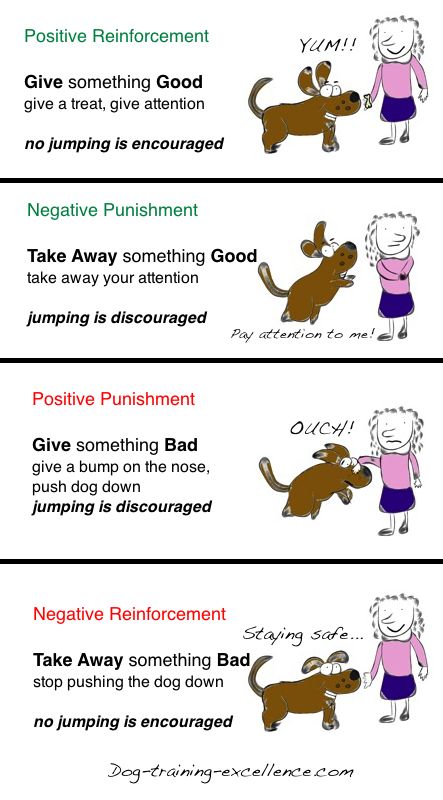| Back to Back Issues Page |
 |
|
The Yes Dog!, Issue #002 -- Dog electronic collars vs obedience training methods. January 15, 2013 |
Issue #002, January 15th 2013Welcome to the second issue of The Yes Dog! I am so excited to share with you some of the new articles in our website. And a little bit of science as well! (it never hurts)... Feel free to drop me a line with questions, suggestions or even a theme you would like to see featured here. You can send me a quick
e-mail!
I have taken a break from my website for a few months. I am a graduate student studying neuroscience and sometimes experiments, conferences and projects get on the way! I am back now and ready for some doggy time! Happy New Year Everyone! I hope you and your furry friends have started with lots of energy and enthusiasm for training and learning. January is National Train Your Dog Month! so get the clicker, treat pouch and do some fun work daily!
You can also encourage friends and family to train their pet dogs too! We want to keep as many dogs out of the shelters as possible this year. And it all starts with training! Table of Contents
The Science of Dog TrainingElectronic collars vs obedience training, which one is the best?A Review of Blackwell EJ, Bolster C, Richards G, Loftus BA and Casey RA. The use of electronic collars for training domestic dogs: estimated prevalence, reasons and risk factors for use, and owner perceived success as compared to other training methods. BMC Veterinary Research, June 2012.Ask 10 different people for advice on how to solve your dog's barking problem and guess what? you will most likely get 10 completely different (and sometimes opposite) answers. This research article aimed to better understand the efficacy of one of these methods: the use of electronic-collars. It compared it with hands on training methods as reported by the owners. The hands-on methods are divided into two categories: "Reward based" (positive reinforcement/negative punishment) and "Aversive based" (positive punishment/negative reinforcement). Only a decade or so ago dog training was mostly achieved using Aversive methods. Today we are seeing more and more Reward based methods being used by many trainers and owners alike.
Aversive methods are still being used today, mostly when owners choose to train their pet with an electronic device. The article reports 3 types of electronic training devices:
The use of electronic devices is very controversial. Most reward-based dog trainers will never suggest you use one (I personally do NOT recommend them). The main reason for this is that using aversive methods to train your pet is not a good way to establish a good dog-human relationship. Besides these devices can hurt, stress and even emotionally affect your pooch. This is specially true if the owner has bad timing when controlling the device and instead of punishing the undesired behavior he/she punishes a normal dog activity or the punishment is accidentally paired with some other event (like a kid running by - now the dog will be afraid of kids!). Other trainers will give you their opinion on why these devices are useful, for example they can get rid of "self-rewarding" behaviors. Self-rewarding behaviors are things your pet does that make him feel good. Sometimes dogs bark because they are bored, barking is their way of passing the time. In this case, just ignoring the bad behavior won't work because the dog is being "self-rewarded". Because there is very little statistical information about the use and efficacy of these devices the researches had 3 aims. Here are their results:
The researchers had owners all over the UK answer a very detailed questionnaire. It listed many options for training methods including: Physical punishment (e.i smacking) when the dog does something wrong, Harness to prevent pulling on walks, Food rewards (giving treats) when the dog does something correctly, Choke chain to prevent pulling, Clicker training, Citronella collars, etc. It also had a very extensive list of problem behavior the owner could choose from, including: chewing, house soiling, barking, running away, fearful response to noises, excitability, etc. They collected 3897 questionnaires. Of these, about ~6% reported the use of an e-device for training their dog. This seems like a low number, but extrapolating the data they conclude that about half a million dogs are trained with electronic devices in the UK. An interesting finding was that men were more likely than women to report the use of e-collars and describe their dogs misbehaviors. Is this a human gender different? is it that dogs behave differently with men or women? This study doesn't answer this questions though.
The researches found that problems with recall, barking and chasing behavior were among the most prevalent reasons to use an electronic collar. And a few owners also said they used it for general training purposes.
There was a statistically significant difference between the reported success rates. Owners who used e-collars said that they were less successful than expected while owners using rewards reporter a higher success than expected! This is good news for the dogs! so, now you know…if you are thinking about getting an electronic-collar for your hound…think again! Using reward based training methods might be the best option.
References: The use of electronic collars for training domestic dogs: estimated prevalence, reasons and risk factors for use, and owner perceived success as compared to other training methods. Blackwell EJ, Bolster C, Richards G, Loftus BA, Casey RA. BMC Vet Res. 2012 Jun 29;8:93. Train your dog to...Be Quiet!
Wouldn't you love if your dog stop barking when you asked him to? It can be done! It requires a lot of practice, patience and consistency as usual. You will use the dog training method Capturing. This means that you will wait for your hound to be quiet on his own, then say they word "Quiet" and give him a treat! Repeat many times until he starts getting quiet faster and faster. If you know there is something that makes him bark (like the doorbell) ask someone to ring it at certain intervals to practice. Repeat many times until he learns the game. The sooner he becomes quiet, the faster the reward comes. Now try the command "quiet" before he is quiet. And that is how you start teaching your pet the meaning of the word "Quiet". To learn the next steps in training a reliable "Quiet" command follow this link. Featured ArticleStop Dog From Barking - Common mistakes and effective solutions
A dog barking is not always a bad thing. Dogs bark to communicate things! It only becomes a problem when it is too excessive. Most dog parents make mistakes when trying to solve this issue. With their best intentions at heart they make matters worse. For example, have you ever gotten really frustrated at your barking dog and started shouting "Quiet!" - Quiet! Quiet! QUIET! - For some dogs this shouting match is encouraging, they might think you are barking with them! Helping him scare the intruder! Never ask your dog to do something that you haven't expressly trained him to do. And even then there are many circumstances in which they will still not respond (distractions, stress, fear, etc.). Learn here what to do and what not to do to stop your hound barking., Interviews with Pet ExpertsNikki Moustaki, lively dog trainer and recognized pet expert.
Nikki Moustaki is a dog trainer and pet expert. She has amazing accomplishments that range from developing a campaign to raise food for shelter dogs, writing over 40 books (with half a million of her pet care and training books in print!), to hosting TV shows, writing blogs and articles on pet care and mostly having a great time with her own pets. Nikki is a positive dog trainer and we were lucky to have her spend some time answering Dog Training Excellence questions. Sneak Peak:"There's something I call "the lightbulb moment" in dog training. This usually happens with a shelter dog or someone's "bad dog" who has gone his whole life being misunderstood. I communicate with the dog, and all of a sudden a lightbulb goes off in his head. You can see the joy in the dog's soul when this happens (and he's usually bouncing around like a tennis ball)."
Get advice, tips and insight from this interview! You don't want to miss it. Interview with Nikki Moustaki. Your Questions and StoriesThis section is for you to brag about your dog! You can also ask questions (and get answers), tell us your advice or share an interesting anecdote. Your story could be featured in The Yes Dog! And will get its own webpage that you can share with friends and family. Click here to share! This issue's featured story is about Kaiser a mini schnauzer dog communicating with his parent through body language? What do you think he is saying while his nails are being clipped?
Find out here and add your comments too! That is all for now. Until the next time,
P.S: Would you like to have your own website? It is easier than you think. I had no knowledge about the web but here I am! You can have yours too... watch the Site Build It! Video Tour. 
Copyright © 2012 Natalia Rozas de O'Laughlin. All Rights Reserved. Unauthorized duplication or publication of any materials prohibited. Not intended to substitute for veterinary, legal or other professional advice. Consult your vet for advice about medical or behavioral conditions & treatment of your pet. |
| Back to Back Issues Page |





